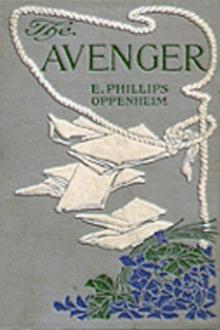Hitler's Terror Weapons, Brooks, Geoffrey [cat reading book .txt] 📗

Book online «Hitler's Terror Weapons, Brooks, Geoffrey [cat reading book .txt] 📗». Author Brooks, Geoffrey
We must now place ourselves in the shoes of the 20 July plotters determined at some stage to overthrow Hitler. The U-boat offensive in the Atlantic had been defeated. German cities and industry were being pounded day and night by bomber fleets which roamed across Reich airspace with impunity. The Army and Waffen-SS were close to exhaustion, defending the ever-shrinking perimeter of Greater Germany. The situation was not completely hopeless, but it would not be long before it was.
Ernst von Weizsäcker, the father of Heisenberg’s close colleague, was Under-Secretary of State at the German Foreign Office, where he was one of the opponents of the Nazi regime. In 1938 he had informed the British Foreign Office of the existence of a group of civilian and military leaders ready to overthrow the Nazi Government if Hitler should go to war over Czechoslovakia, and was himself a major conspirator in what appears to have been the best-prepared coup ever planned against Hitler.
But Chamberlain and Lord Halifax, who had been asked to provide a strong demonstration of their determination not to tolerate the assimilation of the Czech state, disregarded the request, believing that an accord with Hitler was still possible. The German plotters were dismissed as Jacobites. The elder von Weizsäcker remained a focus of resistance in the Nazi State at war but was ultimately convicted at Nuremberg for alleged war crimes on the basis of his signature to certain documents.
According to Hitler’s Luftwaffe ADC Nicolaus von Below90, the SS interrogations of the July 1944 plotters reported widescale treason by military leaders throughout the preceding four years: the preparations for the French campaign, the dates of the attack and the objectives of the first operations: even the beginning of the Russian campaign had been betrayed.
Long before the attempt on Hitler’s life the plotters had approached the Allied camp to establish terms for peace. Unconditional surrender was obviously not acceptable, yet, beyond that, all they got was encouragement to carry through their plans to overthrow Hitler. The Soviet author and former ambassador to Bonn, Valentin Falin91, demonstrated by reference to Russian secret archives that the resistance movement penetrated to the highest military level in Germany and had contributed substantially to the success of the Allied invasion of occupied France in June 1944.
Professor Heisenberg, who in June 1944 had turned down an invitation by a Professor of History of his acquaintance, Adolf Reichwein, to participate in a plot against Hitler, frequented a social group known as the Mittwochgesellschaft(Wednesday Club). This was an intellectual forum of conservative opposition to Hitler composed of academics, civil servants and industrialists. Its members included the diplomat Ulrich von Hassell: General Ludwig Beck, the nominal head of the military conspiracy against Hitler; the philosopher Spranger; the Prussian Finance Minister Popitz; Ferdinand Sauerbruch, the Chief Surgeon of the German Army, and Rudolf Diels, the founder of the Gestapo. Reunions were held at the Harnack House in Berlin-Dahlem, the headquarters of the Kaiser Wilhelm Institute.
At the meeting of 12 July 194492 Heisenberg addressed the forum with a talk entitled “What are the Stars?” which appears to have been a cover for a discussion about nuclear fission. Spranger observed that these scientific developments promised to change the way men thought about the world, General Beck was more explicit and said that if atomic energy could be used for bombs then “all the old military ideas would have to be changed”. This implies that the question of the atom bomb must have been discussed. Just before leaving Berlin for his home at Urfeld on 19 July, Heisenberg delivered minutes of the meeting to Popitz. The attempt on Hitler’s life was made the next day.
Dr Kurt Diebner and ten assistants had set up an atomic laboratory in the cellar of a school at Stadtilm in the Harz, about thirteen kilometres from Ohrdruf, where Oberst Graf von Stauffenberg, the ringleader of the conspiracy, stayed regularly on the Wachsenberg, which was a favourite meeting place for officers and scientists working in the Ohrdruf area. Frau Cläre Werner, a watchtower lookout who resided on the mountain, recalled Stauffenberg visiting on a number of occasions and she still had possession of items of property he had left with her on his final visit. 93 Why should Stauffenberg have come so often to Ohrdruf when he worked in Berlin? Did the German resistance movement have more than a passing interest in what was going on at Stadtilm and its subterranean environs?
The German author Harald Fäth94 reported that in the 1960s Gerhard Rundnagel, a master plumber who worked in the Stadtilm atomic research laboratory, gave evidence to a DDR judicial enquiry about the wartime activities there. In the depositions Rundnagel made a statement that the Stadtilm Research Institute had not been properly plumbed in and so was not really up and running. As far as he could see the scientists there were not actually working on anything. This left a lot of time for talk and Rundnagel described conversations he had had at the beginning of July 1944 with Dr Rehbein, a scientist at Stadtilm. Rehbein is alleged to have told Rundnagel that what was under development there was a type of bomb which had a greater explosive power than anything that an old weapons engineer such as himself could possibly envisage. Rehbein then went on to say, “Within a few days you will hear a decisive announcement on which will depend the outcome of the war.” On 20 July 1944 the unsuccessful attempt was made on Hitler’s life. When Rundnagel asked Dr Rehbein later if that was what he had meant, the scientist laughed and replied, “Now it will never be used.





Comments (0)